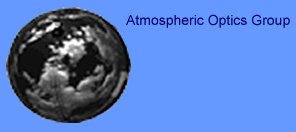
 |
| |
|
|
|
|
|
|
|
New WSI Concepts
Recent developments have gone both in the direction of simple systems for specific purposes (see Airborne Imaging Systems) and more sophisticated systems for challenging or broader capabilities (see Remote WSI systems). Relatively simple systems and cost effective systems could be designed for any number of specific tasks such as acquiring radiance distributions for night-time. The relatively sophisticated systems such as the Day/Night WSI could also be adapted for many other applications, such as predicting the best satellite tracks to use at tracking stations. The fact that these systems operate right through the sunrise and into daytime, as well as sunset and night-time, gives them far more flexibility than any other sky imagers we are aware of. We are also investigating new approaches such as the use of simple logic devices to build stand-alone occultors. While the directions we go are clearly driven by the needs of sponsors, our capabilities are quite diverse, due to our many years of experience and knowledge in instrument characteristics, atmospheric variations, radiometry, and related areas. Our strongest capability is in the design and fabrication of new devices, analytic techniques, and algorithm development for experimental atmospheric optical studies.
Produced
by the Marine Physical Laboratory, SIO.
|